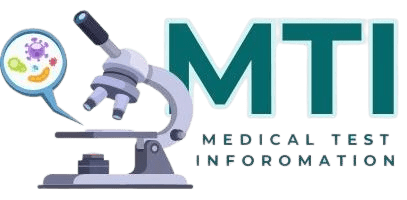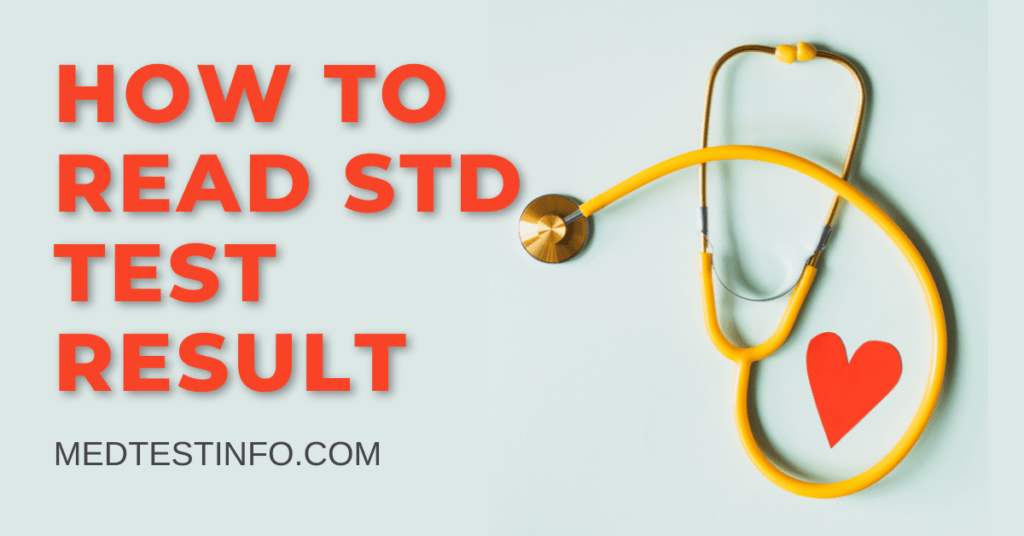
Overview
No one likes to hear the word cancer, but thankfully, finding it early with lab tests can provide some comfort. It boosts survival chances and lets you begin treatment at the best time. In this article, we will explore how doctors find early signs of cancer in lab tests. We will also discuss what the tests include and why regular screening is crucial, offering hope and reassurance to those concerned about cancer risks.
Why Early Detection Of Cancer Matters?
Quick and accurate diagnosis enhances the possibility of effective treatment outcomes. In the initial stages, cancer is small and does not spread, so it is easy to remove or treat it. Symptoms do not appear even after most cancers reach a severe stage, so it is essential to reveal early signs of cancer in lab tests. These tests make it easier for your doctor to look for abnormal cells or changes in the body before they become a serious threat to you.
Detecting cancer early enhances the chances of successful treatment, reduces the need for intensive therapies, and can ultimately save lives.
Early Signs Of Cancer In Women
Understanding the early warning symptoms of cancer in women is empowering. It puts you in control, helping you catch cancer earlier when it’s easier to treat. Women are more likely to develop specific types of cancer, such as breast, ovarian, and cervical cancer. Recognizing these early warning signals is critical in discovering and treating cancer on time.
Signs And Symptoms Of Metastatic Breast Cancer
Metastatic breast cancer spreads to other parts, emphasizing the need for early detection. Recognizing early signs helps you take action for effective treatment. Some common early indicators include:
- Unexplained Bone Pain: Persistent discomfort in the bones, especially in the back, ribs, or hips, may signal that cancer has spread to the bones. This discomfort could be a sign of metastasis, where cancer cells travel to the bones from another part of the body. It is essential to seek medical help if the pain persists.
- Chronic Headaches: Frequent, severe headaches that do not respond to usual treatments might suggest cancer spreading to the brain.
- Breathing Difficulties: Shortness of breath or a persistent cough might suggest that the cancer has spread to the lungs.
- Swelling In The Abdomen: Unexplained bloating or swelling may be a sign that cancer has spread to the liver.
If you experience these symptoms, remember you’re not alone. It’s necessary to reach out to a healthcare provider quickly. Support and early detection can make treatment more effective and improve outcomes. Early action offers more options for managing the disease and controlling cancer. Staying vigilant helps you take charge of your health.
Warning Signs Of Breast Cancer
A lump or thickening in the breast or underarm area is one of the earliest signs of breast cancer. Other warning indications include breast size or form changes, skin dimpling, nipple discharge, and breast redness. While not all lumps are cancerous, it is critical to have them examined by a specialist to rule out any potential issues. Mammograms and routine self-examinations can aid in early detection. Prompt doctor consultations also aid in discovering breast cancer early, which is easier to treat.
Symptoms Of Inflammatory Breast Cancer
Inflammatory breast cancer (IBC) is an uncommon but aggressive kind of breast cancer that rarely appears with a lump. Symptoms may include redness, swelling, warmth in the breast, and skin thickening, similar to an orange peel. IBC can progress quickly, so seek medical help when symptoms begin. Unlike other types of breast cancer, IBC may be challenging to detect with a mammogram, so paying attention to physical changes is critical.
Early Signs Of Cancer In Men
There are certain cancer types that men are more likely to suffer from, such as prostate, lung, and colorectal cancer. Lab tests help in its early detection. It is also essential for men to look for early signs of cancer in lab tests, as it gives awareness before the tumor becomes dangerous. Initially, one has to look for symptoms such as a decrease in weight, lumps, and changes in bowel movements.
Signs Of Enlarged Prostate In Men
Benign prostatic hyperplasia (BPH), another name for an enlarged prostate, is a common condition in older men. A weak or interrupted urination, difficulty in urination, frequent urination (particularly at night), and the sensation that the bladder is not empty are all early indicators. Although these symptoms may suggest an enlarged prostate, they could also represent early indicators of prostate cancer. It is essential to consult a doctor for further testing.
First Signs Of Men’s Breast Cancer
Although uncommon, men can develop breast cancer. Early signs may include a painless lump in the breast area, swelling or soreness, nipple discharge, or changes in the form or appearance of the breast or nipple. Because men frequently ignore breast cancer, they should have a healthcare expert evaluate any unusual changes as soon as possible.
Symptoms Of Lung Cancer In Men
Lung cancer is one of the most frequent cancers among men, especially smokers. Early symptoms may include a persistent cough, shortness of breath, chest pain, and coughing blood. Other indicators may include unexpected weight loss or recurrent respiratory infections. Men with a history of smoking should be alert to these signs and undergo regular lung cancer testing.
Warning Signs Of Testicular Cancer
Testicular cancer primarily affects younger men between 15 and 35 years of age. Early warning signs include:
- A lump or swelling in one of the testicles
- Feeling of heaviness in the scrotum
- Persistent discomfort in the lower abdominal or groin region
Sometimes, men may experience pain, but often, testicular cancer is painless. Regularly examine your testicles to detect abnormalities early; consult a healthcare provider immediately if you notice any changes.
Symptoms Of Cancer
Beyond lab results, some cancers show early symptoms, which may require further lab testing. People usually mistake these symptoms for a minor illness, but they point out advanced signs of cancer. For this, healthcare professionals perform special lab tests to make a proper diagnosis.
Monitoring your health and discussing early signs of cancer in lab tests with your doctor can help you discover cancer earlier. Observable symptoms include:
- Persistent fatigue
- Unexpected weight loss
- Changes in bowel movements
- Skin color
Which Types Of Cancer Can Blood Tests Detect?
A blood test is essential to detect the early signs of cancer. It identifies crucial markers that predict cancer before physical symptoms appear. For example, excessive white blood cells and abnormal red blood cells in the blood test point toward leukemia, i.e., blood cancer. Although blood tests do not give an exact diagnosis of cancer, they help us detect the early signs.
Blood tests can help detect many cancers in their early stages. Lab test results mainly help in detecting cancers such as leukemia, lymphoma, and ovarian cancer. Here are several standard lab tests that help discover early signs of cancer in laboratories.
Complete Blood Count (CBC)
A complete blood cell (CBC) test measures the different blood cells. Abnormalities in its results may point to some cancers, such as leukemia, or it may help you detect early signs of cancer. Doctors use a CBC test to check the overall blood composition, but excessive abnormalities may suggest specific cancers.
Tumor Markers
Cancer cells or healthy cells produce tumor markers in response to malignancy. You can find these markers in blood, urine, or tissues, which may suggest cancer. While tumor markers alone cannot diagnose cancer, high levels of specific markers in lab tests act as early warning indications of cancer and require further investigation. For example, prostate cancer often elevates PSA (Prostate-Specific Antigen), while doctors use CA-125 to diagnose ovarian cancer. Doctors discover increased tumor markers. They usually perform additional diagnostic testing, such as imaging or biopsies, to confirm the presence and type of cancer.
Genetic Testing
Individuals with a family history of cancer may benefit from genetic testing, which looks for abnormalities in specific genes associated with an increased risk of various malignancies. For example, the BRCA1 and BRCA2 genes’ mutations are closely linked to an increased risk of breast and ovarian cancer. Detecting early indicators of cancer in lab tests using genetic testing can help clinicians determine the optimal preventative or treatment strategy. If doctors discover a genetic mutation, they may advise regular monitoring and preventive interventions, such as lifestyle adjustments or even prophylactic surgery, to lower the chance of cancer development.
Liquid Biopsy
A liquid biopsy is one of the most proficient cancer detection tools. It is a non-invasive diagnostic that can detect cancer cells or tumor DNA circulating in the bloodstream. This allows lab testing to discover early signs of cancer. Unlike traditional biopsies involving tissue removal, liquid biopsies only require a blood sample.
This novel method is especially beneficial for detecting malignancies such as lung, breast, and colorectal cancer. It can identify cancer even before physical signs appear. Liquid biopsies also monitor how effectively a treatment works. By detecting changes in cancer cell or DNA levels over time, they are an effective tool for early identification and ongoing cancer care.
Pap Smear And HPV Testing
Pap smears, paired with HPV testing, play a crucial role in detecting early cervical cancer signs. Pap smears can detect abnormal cells in the cervix before they develop into cancer, allowing for earlier intervention and therapy. HPV testing point out the virus responsible for many cervical cancer cases, particularly high-risk variants. These tests influence the reduction of cervical cancer rates, and they form an essential component of women’s health screening programs globally. Doctors suggest that women begin regular Pap screenings and HPV tests at age 21, or earlier if sexually active.
Colonoscopy And Fecal Tests
Colonoscopies and fecal testing can discover colorectal cancer early. Colonoscopies allow doctors to visually inspect the colon and rectum for abnormal growths, called polyps, that may eventually develop into cancer. Fecal diagnostics, such as the FIT (Fecal Immunochemical Test), aim to detect blood on the stool, which can be an early symptom of colon cancer. People over the age of 50, as well as those with a family history of colorectal cancer, should have regular screenings. Detecting early indicators of cancer in lab tests with these procedures increases the likelihood of successful treatment and long-term survival.
What To Expect During Lab Testing
The first step in detecting early signs of cancer in lab tests is often to identify the test as simple and non-invasive. A technician draws a tiny amount of blood for testing, usually from the arm. Examples of these procedures are the Complete Blood Count (CBC) and tests for tumor markers. Most people only feel mild discomfort throughout the process. Depending on the test, you can receive results within a few days to a week. Doctors usually perform additional tests, such as imaging (CT scans, MRIs), biopsies, or more specialized blood tests, to confirm a cancer diagnosis when blood tests show abnormal results.
Depending on the test type, a saliva or blood sample may be required for genetic testing. Liquid biopsies offer a less intrusive and speedier method to gather information about cancer cells. However, they still require blood collection. Your healthcare practitioner will discuss the next steps if lab tests reveal early signs of cancer. This may involve further testing or starting treatment.
When Should You Get Tested?
A personalized cancer test plan should consider your lifestyle, age, family history, and other personal risk factors. Early identification and prevention of cancer largely depend on knowing when to use lab testing to look for early warning indicators. There are specific screening guidelines for most malignancies. For example, men over 50 should consider getting regular PSA tests to check for prostate cancer. Women over 50 should get routine mammograms to check for breast cancer.
People with a family history of breast or colorectal cancer may need earlier and more frequent screenings than those without risk factors. A healthcare professional can help you choose the best testing schedule if you are unsure about your risk. Doctors may recommend yearly screenings or specific tests that can detect cancer early, even before symptoms appear, for those with a genetic susceptibility.
Conclusion
Early identification is critical to improving cancer outcomes, and early indicators of cancer in lab testing provide a window of opportunity for treatment before the disease advances. Many malignancies, including blood, lung, breast, and colorectal cancers, can be detected early with standard lab tests. These tests not only aid in diagnosing cancer but also provide important information regarding the efficacy of current treatments.
Taking a proactive attitude toward your health, interacting with your doctor regularly, and undertaking relevant exams dramatically increases your chances of detecting cancer early. When doctors find early indicators of cancer in lab tests, treatment choices are often more effective and less invasive, making all the difference in achieving a favourable outcome.
Maintaining your health and lowering your risk of cancer requires regular testing, informational gathering, and acting on any concerning findings. The best chance of treating and maybe surviving cancer is to find early warning indications in laboratory tests. To protect your future, be watchful, get checked, and take charge of your health.



